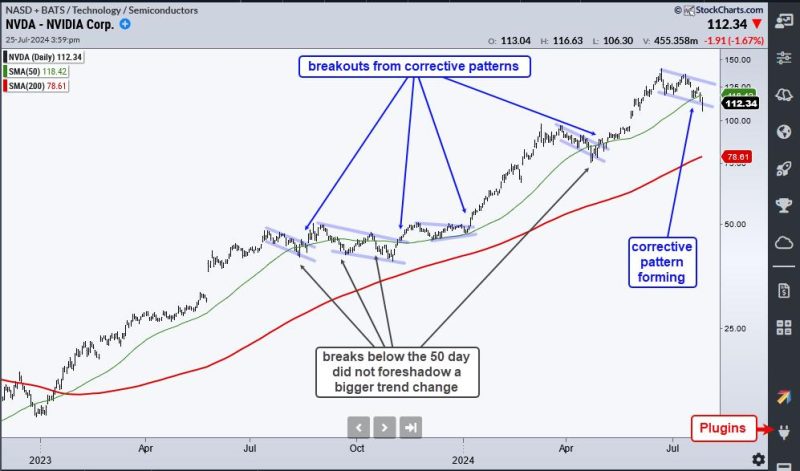Nvidia Breaks the 50-Day SMA: Is This a Threat or an Opportunity?
Nvidia has recently crossed below its 50-day simple moving average (SMA), causing some concern among investors and traders. The 50-day SMA is a technical indicator that shows the average price of a stock over the past 50 trading days. When a stock breaks below this moving average, it is often seen as a bearish signal and can indicate a possible trend reversal.
However, it is essential to analyze the situation further to determine whether this event signifies a threat or an opportunity for Nvidia and its investors. Let’s delve deeper into the implications of Nvidia breaking the 50-day SMA and explore the potential outcomes for the company.
One possible interpretation of Nvidia crossing below the 50-day SMA is that it may signal a short-to-medium-term downtrend in the stock price. Investors who rely heavily on technical analysis may view this as a bearish sign and decide to sell their positions or avoid buying more shares until the stock shows signs of a reversal.
On the flip side, some investors may see Nvidia’s dip below the 50-day SMA as an opportunity to accumulate shares at a discounted price. Buying the stock when it is trading below its moving average could be a strategic move for investors who believe in the long-term growth prospects of the company. They may view the temporary price decline as a chance to enter or add to their positions before the stock potentially recovers.
It is crucial to consider other factors beyond just the 50-day SMA when evaluating Nvidia’s current situation. Fundamental analysis, market trends, industry outlook, and company-specific developments should also be taken into account to make a well-rounded assessment of the stock’s potential performance.
Nvidia is a leading semiconductor company known for its innovative products in the gaming, data center, and AI industries. The company’s strong track record of growth and technological advancements could serve as a catalyst for a potential rebound in the stock price, even after breaking below the 50-day SMA.
In conclusion, while Nvidia breaking the 50-day SMA may raise concerns among some investors, it is not necessarily a definitive threat to the stock’s performance. Depending on individual investment goals and risk tolerance, the event could be viewed as either a warning signal or a buying opportunity. Conducting thorough research and analysis before making any investment decisions is essential to navigate market fluctuations and capitalize on potential opportunities.




























